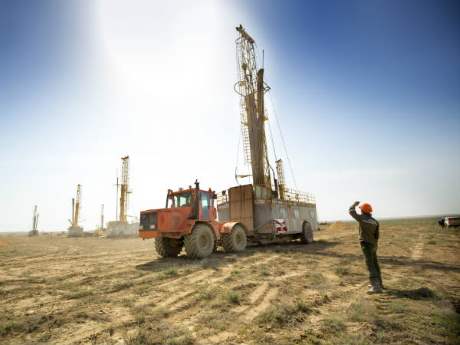Inkai forecast production continues to rise
Uranium production from the Inkai joint venture in Kazakhstan is forecast to increase by more than 25% this year, according to a new NI 43-101 technical report filed by 40%-owner Cameco. The operation is forecast to reach maximum production of 10.4 million pounds U3O8 per year in 2020.
 |
| Inkai operations (Image: Cameco) |
According to the new report - filed on 25 January but with an effective date of 1 January - Inkai's 2017 production was 5.5 million pounds U3O8 (2116 tU), of which Cameco's share is 3.2 million pounds. Production this year is forecast to be 6.9 million pounds U3O8, of which Cameco's share will be 3.4 million pounds.
JV Inkai is licensed to produce up to 10.4 million pounds U3O8 per year, and plans outlined in the report see production continuing to ramp up in 2019 until the licensed capacity is reached in 2020. Over the lifetime of current mineral reserves, total production from the in-situ leach (ISL) operation is estimated at 229.2 million pounds U3O8 with a projected mine-life to 2045. Cash operating costs are estimated to be CAD 9.95 ($7.74) per pound U3O8, with capital costs estimated to be CAD 1.064 per pound.
Kazakhstan has been the world's leading uranium producer since 2009, with its 2016 production of 24,560 tU accounting for 39% of world production. National atomic corporation KazAtomProm announced on 4 December its intention to reduce planned uranium production by 20% for a period of three years beginning in January, to better align output with demand. This was expected to result in a production cut of 4000 tU this year alone. A total of 16 enterprises wholly or partially owned by KazAtomProm are involved in the development of uranium mines, with most projects in the Chu-Sarysu province in the central south of the country. Almost all of Kazakhstan's uranium production is by ISL.
Cameco on 8 November announced a ten-month temporary suspension of production from the McArthur River mining and Key Lake milling operations in northern Saskatchewan due to continued uranium price weakness. The uranium market has long been acknowledged to be in a state of oversupply, and the late-2017 announcements from Cameco and KazAtomProm were widely greeted by other uranium producers as positive news.
A restructuring of the Inkai joint venture (known as JV Inkai) between Cameco and KazAtomProm, which took effect on 1 January, has seen Cameco reduce its share to 40% while KazAtomProm's share has increased to 60%. The restructuring was announced in 2016 and finalised in December last year.
Researched and writtenby World Nuclear News